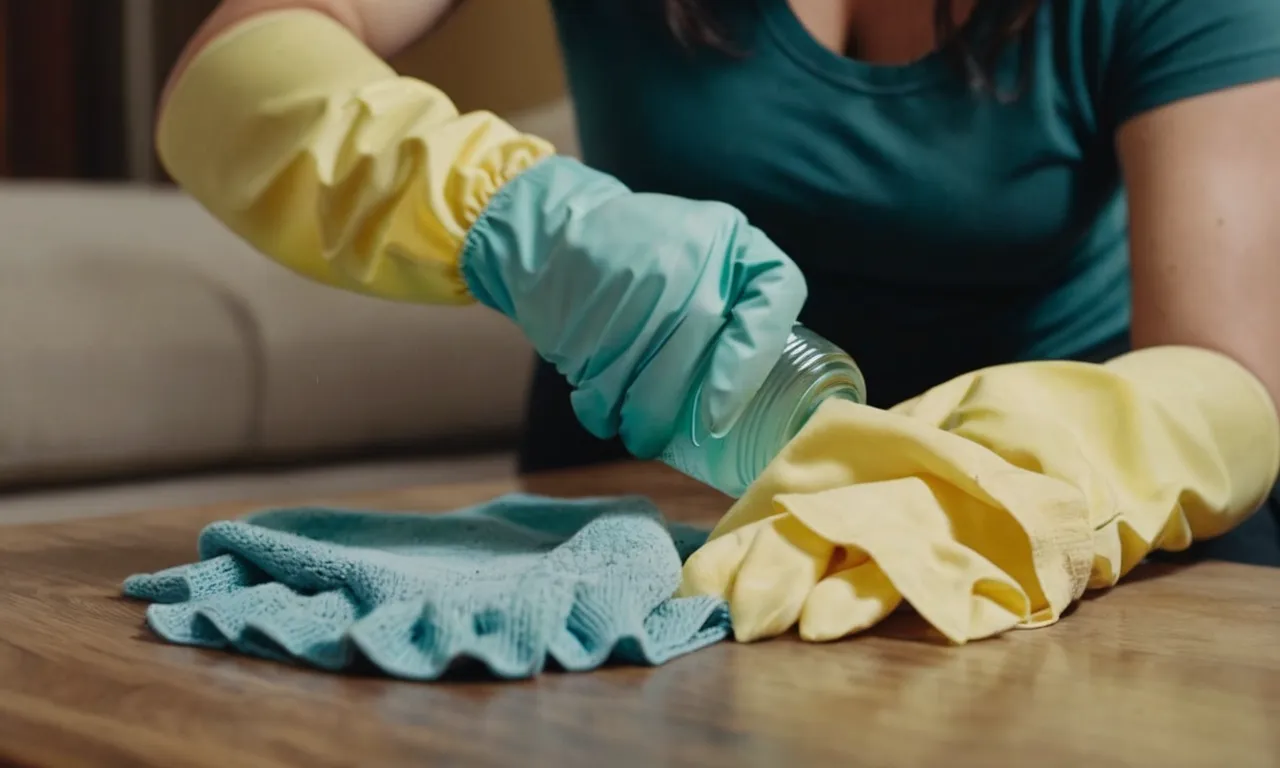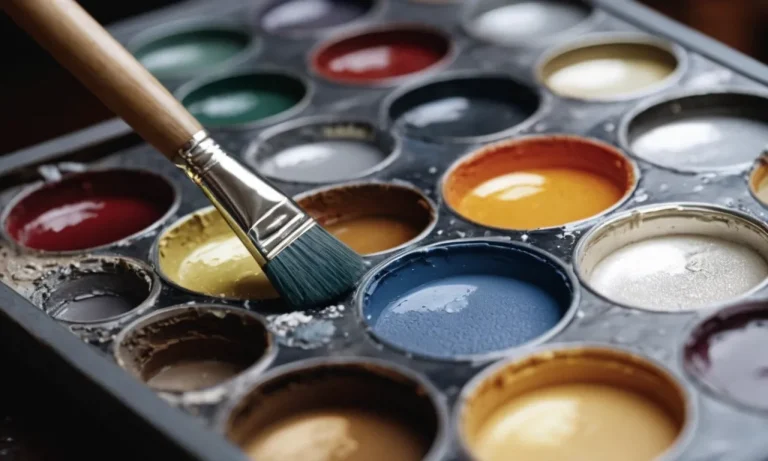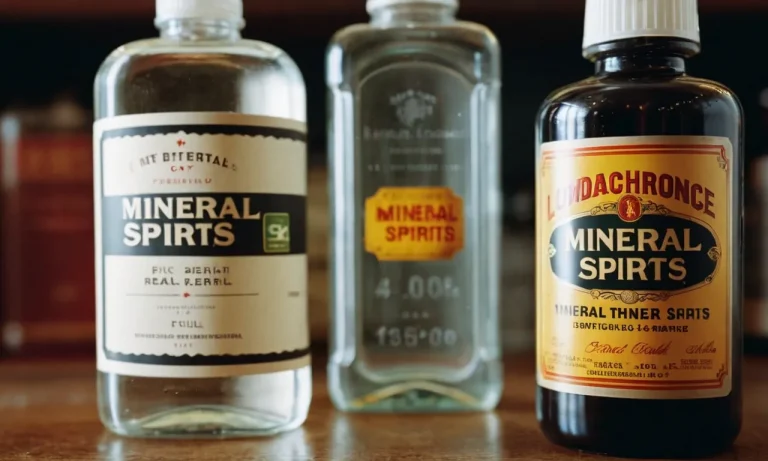How To Get Cat Pee Smell Out Of Furniture: A Complete Guide
Does your furniture reek of cat pee even after cleaning it multiple times? That stubborn ammonia odor can be incredibly difficult to remove. But don’t despair! With the right techniques and products, you can banish that nasty cat urine smell for good.
If you’re short on time, here’s a quick answer to your question: Combine baking soda, hydrogen peroxide, and dish soap into a DIY cleaning solution. Scrub it into the stain and let sit for 24 hours before rinsing.
The baking soda will absorb odors, the peroxide will lift stains, and the soap will cut grease.
In this comprehensive guide, we’ll cover everything you need to know to permanently get rid of cat pee smells from your furniture and make it fresh again. You’ll learn the reasons cat urine smells so bad, how to find all the urine stains (even hidden ones), what ingredients work best, and step-by-step instructions for foolproof odor removal.
With a little effort, patience, and the right techniques, you can have urine-free furniture once more.
Why Cat Urine Smells So Bad
Cat urine can have a strong and unpleasant odor that can be difficult to eliminate. Understanding why cat urine smells so bad can help you effectively tackle this issue.
The Science Behind the Stink
The foul smell of cat urine can be attributed to a chemical compound called urea. Urea is present in urine and is excreted by the kidneys. When it comes into contact with air, urea breaks down into ammonia, which is responsible for the pungent odor.
In addition to ammonia, cat urine also contains other compounds such as uric acid and bacteria. These compounds can further contribute to the strong and lingering smell.
Cat Urine Composition
Cat urine is composed of various substances, including water, urea, uric acid, hormones, and other waste products. The specific composition of cat urine can vary depending on factors such as the cat’s diet, hydration levels, and overall health.
Urine from intact male cats or cats that are not neutered may have a stronger odor due to the presence of testosterone. Female cat urine, on the other hand, may have a slightly milder smell.
Bacteria Growth Causes Lingering Odor
One of the reasons why cat urine odor can linger even after cleaning is the growth of bacteria. When cat urine is left untreated, bacteria can thrive in the moist environment, leading to the production of volatile compounds that contribute to the foul smell.
It’s important to address cat urine stains promptly and thoroughly to prevent bacterial growth. Using enzymatic cleaners specifically designed to break down the components of cat urine can help eliminate the odor at its source.
For more information on cat urine and its odor, you can visit websites like petmd.com or thesprucepets.com.
Finding All the Urine Stains
When dealing with cat pee smell on furniture, the first step is to identify all the urine stains. Here are some helpful tips to find them:
Look for Obvious Wet Patches
Start by visually inspecting the furniture for any obvious wet patches. Cats often urinate on soft surfaces like sofas or mattresses, leaving behind damp areas. Feel the surface with your hand to confirm if it is wet.
Check for Hidden Saturated Areas
Even if you don’t see any wet spots, it’s essential to check for hidden saturated areas. Cat urine can seep deep into cushions, padding, or fabric, making it harder to spot. Use your nose to detect any strong odor or use a cloth to press firmly on different areas of the furniture.
Use a Blacklight to Find Old or Dried Stains
Old or dried urine stains can be challenging to locate with the naked eye. Using a blacklight can help you identify these hidden spots. Turn off the lights in the room and shine the blacklight over the furniture. The urine stains will appear as glowing patches under the blacklight.
Remember, finding all the urine stains is crucial for effectively removing the cat pee smell from your furniture. By identifying the extent of the problem, you can tackle each stain individually and ensure a thorough cleaning process.
Supplies You’ll Need
When it comes to getting rid of cat pee smell from your furniture, having the right supplies is essential. Here are some key items you’ll want to have on hand:
Enzymatic Cleaners
Enzymatic cleaners are specifically designed to break down the proteins in cat urine that cause the odor. These cleaners are highly effective and should be your go-to choice for eliminating the smell. Look for products that contain enzymes like protease and amylase, as these are known to be particularly effective.
Baking Soda
Baking soda is a versatile and affordable option for neutralizing odors, including cat pee. Sprinkle a generous amount of baking soda on the affected area and let it sit for at least 30 minutes. Then, vacuum or wipe away the baking soda, and you should notice a significant reduction in the smell.
Hydrogen Peroxide
Hydrogen peroxide is a powerful disinfectant that can help eliminate the bacteria in cat urine, which contributes to the odor. Mix one part hydrogen peroxide with two parts water and use a spray bottle to apply it to the affected area.
Allow it to sit for a few minutes before blotting it dry with a clean cloth.
Dish Soap
Dish soap is another handy item to have when dealing with cat pee smell. Mix a small amount of dish soap with water and use a clean cloth to scrub the affected area. Rinse with water and blot dry to remove any residue and lingering odor.
Vinegar
Vinegar is a natural deodorizer and can be effective in neutralizing the smell of cat urine. Mix equal parts vinegar and water and use a spray bottle to apply the solution to the affected area. Let it sit for a few minutes before blotting it dry.
Scrub Brush
A scrub brush can be helpful for working the cleaning solutions into the fabric or upholstery of your furniture. Choose a brush with soft bristles to avoid damaging the material.
Absorbent Pads
Absorbent pads are useful for soaking up excess urine and preventing it from seeping further into the furniture. Place a pad on the affected area and press down gently to absorb as much liquid as possible. Dispose of the pad properly after use.
Fans
Once you’ve cleaned the affected area, it’s important to promote air circulation to help dry the furniture and eliminate any remaining odor. Use fans or open windows to increase airflow and speed up the drying process.
By having these supplies readily available, you’ll be well-equipped to tackle the task of getting rid of cat pee smell from your furniture.
How to Remove Cat Pee Smell from Furniture
Dealing with cat pee smell on furniture can be a challenging and unpleasant task. However, there are several effective methods you can try to eliminate the odor and restore the freshness of your furniture. Here are some tried and tested methods that you can use:
Method 1: DIY Baking Soda Spray
Baking soda is a versatile and natural odor absorber that can help neutralize cat urine smell. To create a DIY baking soda spray, mix equal parts of baking soda and water in a spray bottle. Shake it well and then spray the solution onto the affected areas of your furniture.
Allow it to sit for about 15-20 minutes before blotting it dry with a clean cloth. Repeat the process if necessary.
Method 2: Vinegar and Dish Soap
Vinegar is another powerful ingredient that can help eliminate cat pee smell. Mix one part white vinegar with two parts water and add a few drops of dish soap. Dampen a clean cloth with the solution and gently blot the affected areas of your furniture.
Vinegar helps to neutralize the odor, while dish soap helps to break down the urine enzymes. Rinse the cloth and repeat the process until the smell is gone.
Method 3: Enzymatic Cleaner Soak
Enzymatic cleaners are specifically designed to break down the proteins in cat urine, effectively removing the smell. Look for a commercial enzymatic cleaner that is safe for use on furniture. Follow the instructions on the product and soak the affected areas of your furniture thoroughly.
Allow the cleaner to penetrate deep into the fabric and let it air dry. The enzymatic cleaner will continue to work as it dries, ensuring complete odor removal.
Method 4: Hydrogen Peroxide and Baking Soda Paste
If the cat pee smell is particularly stubborn, you can try using a hydrogen peroxide and baking soda paste. Mix equal parts of hydrogen peroxide and baking soda to create a thick paste. Apply the paste to the affected areas of your furniture and let it sit for a couple of hours.
Afterward, wipe off the paste with a damp cloth and allow the furniture to air dry. This method can be effective in eliminating tough odors.
Tips for Maximizing Odor Removal
While the above methods can help remove cat pee smell from furniture, here are some additional tips to maximize odor removal:
- Act quickly and clean up the urine as soon as possible to prevent it from soaking into the furniture.
- Test any cleaning solution on a small, inconspicuous area of the furniture first to ensure it doesn’t cause any damage.
- Use a blacklight to locate hidden urine stains that may not be visible to the naked eye.
- Consider using a waterproof furniture cover or plastic wrap to protect your furniture from future accidents.
- Regularly clean and deodorize your furniture to prevent any lingering smells.
By following these methods and tips, you can effectively remove cat pee smell from your furniture and enjoy a fresh and odor-free home.
Preventing Future Cat Pee Incidents
Get More Litter Boxes
One of the most effective ways to prevent future cat pee incidents is to provide your furry friend with enough litter boxes. It’s recommended to have one litter box per cat, plus an extra one. This ensures that each cat has their own space to do their business and reduces the chances of territorial marking.
If you have a multi-story home, place litter boxes on each level to make it easier for your cat to access them.
Try a Different Litter
If you’re facing repeated incidents of cat pee, it might be worth experimenting with different types of litter. Cats can be quite picky when it comes to their litter preferences, so try out various options such as clumping, non-clumping, scented, or unscented litters.
Some cats prefer a certain texture, while others may have sensitivities to certain additives. Don’t be afraid to test different brands until you find the one that your cat prefers.
Clean Litter Frequently
Cats are known for their cleanliness, and a dirty litter box can be a major turn-off for them. Make sure to scoop the litter box at least once a day and completely change the litter every week. Regular cleaning not only keeps the litter box fresh and inviting for your cat but also helps you monitor their urinary health.
If you notice any changes in their litter box habits, it’s essential to consult a veterinarian.
Limit Access to Marked Areas
If your cat has a habit of marking specific areas in your home, it’s crucial to limit their access to those areas. Close doors or use baby gates to prevent them from entering rooms where they’ve previously marked.
Additionally, consider using furniture covers or plastic mats to protect vulnerable surfaces. This way, you can discourage your cat from marking their territory in unwanted places and preserve your furniture.
Use Deterrent Sprays
Deterrent sprays can be a useful tool in preventing future cat pee incidents. These sprays emit scents that are unpleasant for cats, deterring them from marking or urinating in specific areas. However, it’s important to choose a spray that is safe for both cats and furniture.
Always read the instructions carefully and test the spray on a small, inconspicuous area of your furniture before using it more extensively.
Remember, prevention is key when it comes to dealing with cat pee incidents. By implementing these preventive measures, you can create a clean and stress-free environment for both you and your feline companion.
Conclusion
Removing the stubborn ammonia smell of cat urine from furniture is certainly possible with the right techniques. By using absorbent ingredients like baking soda, odor-busting hydrogen peroxide, and powerful enzymatic cleaners, you can break down stains and lift odors at the source.
Finding all the hidden urine spots with blacklights and thoroughly washing and rinsing the furniture will help eliminate any lingering smells. With some elbow grease and the cleaning methods outlined here, you can finally get rid of that offensive cat pee stench for good.
Just be patient and persistent, get to the root of the issue, and take steps to prevent future accidents. Soon, your home will smell fresh once more.







